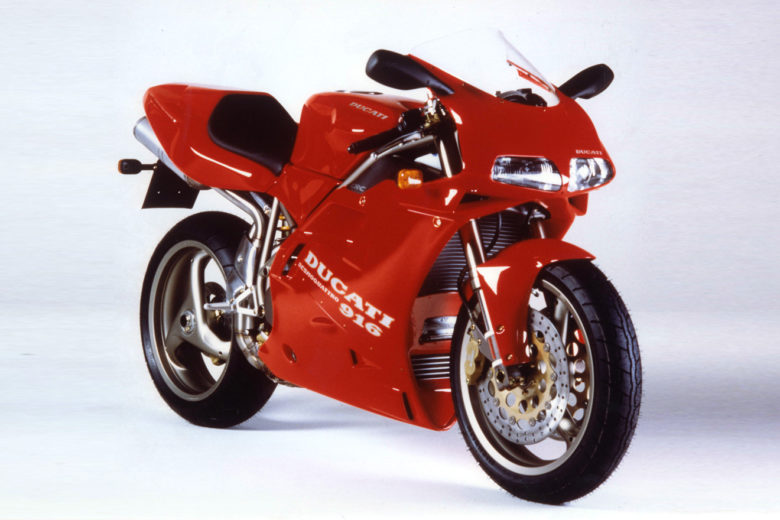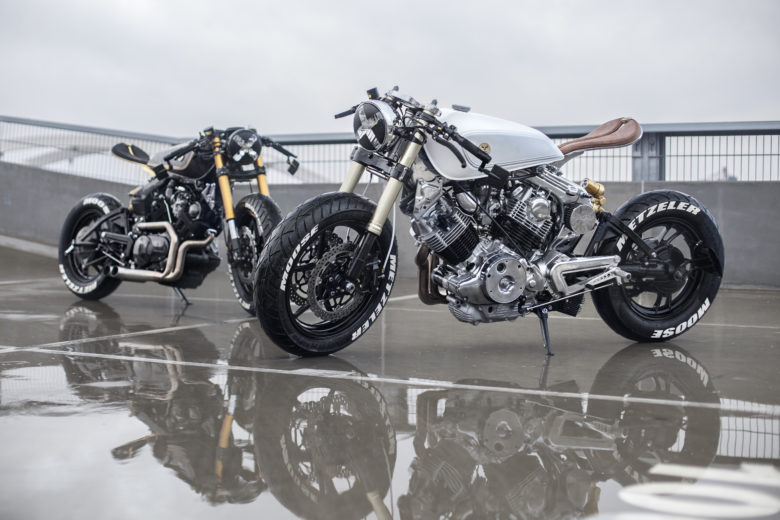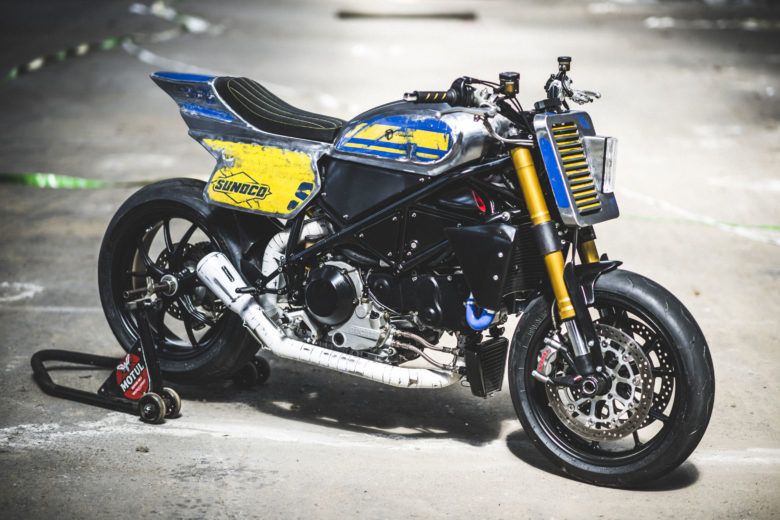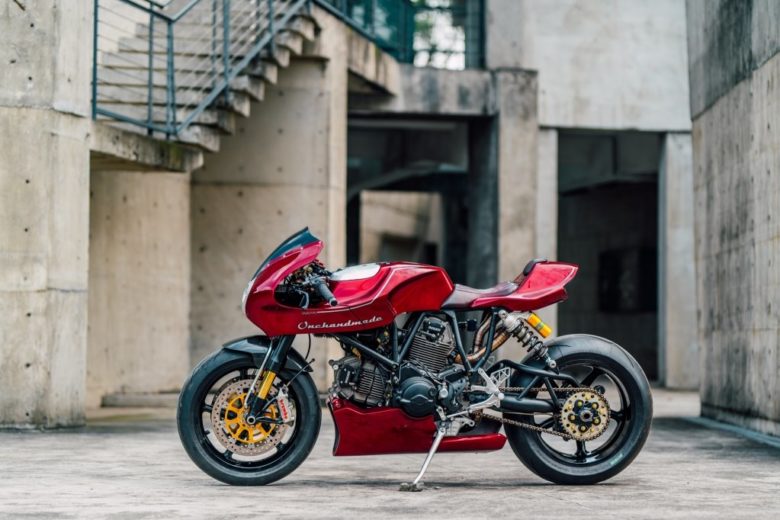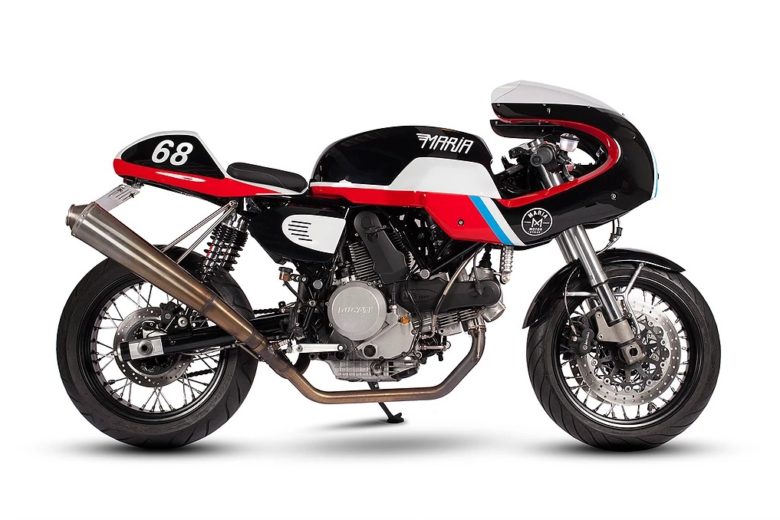Sports bikes are like fresh bread in the morning. Crunchy ciabatta can boost Your appetite and jumpstart the day, but in the evening it becomes just a hard piece of dough. A machine that is offering top performance when it’s released – turns heads of all petrolheads and makes the heart pump faster, becomes yesterday’s news when the next generation comes. And it usually happens fast. It’s how it works with performance bikes. They don’t stand the test of time well, often disappearing in depths of history. But there is one model, that despite its premiere that took place 23 years ago, still can raise the blood pressure of many motorcycle enthusiasts.
It’s Ducati 916 – the most beautiful superbike in history.
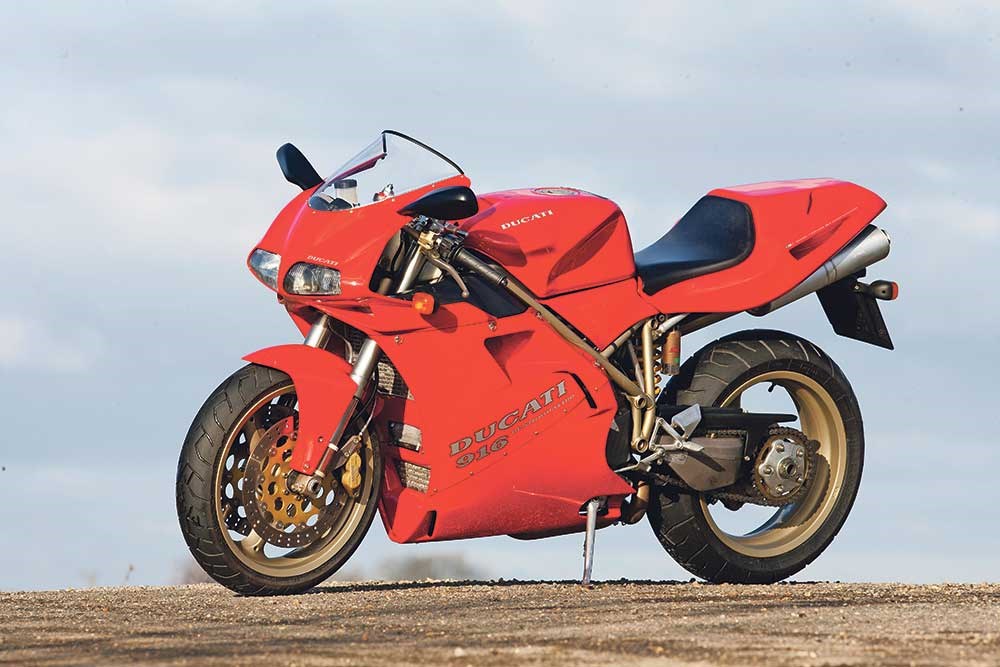
The story of this full-blooded Italian began in the 80’s. In 1985 Cagiva took the control over Ducati. Castolini Cagiva (CEO of the company) wanted to raise the Bologne based factory to the highest level possible. He knew that the Ducati brand needed to stay alive since they were more recognized than his own company. But new era required radical solutions. Immediately it became clear that new engine was required to do the job.
2 projects were fighting for this privilege. Chief Engineer Fabio Taglioni and Pierluigi Mengoli came up with the idea to connect two L-Twin engines, creating an air-cooled V4. At the same time, Massimo Bordi proposed a liquid cooled L-Twin with 4 valves per header. The rumor is that Taglioni went berserk when he found out about the concept Bordi was working on. Claiming that this kind of powerplant is style over substance.
It didn’t stop Bordi’s efforts to continue developing the project. Finally resulting in the presentation of the work to the CEO, who after considering both options – chose a modern L-Twin over V4. This decision resulted in 15 years of Ducati dominance in WSBK.
The legendary Desmoquattro was born
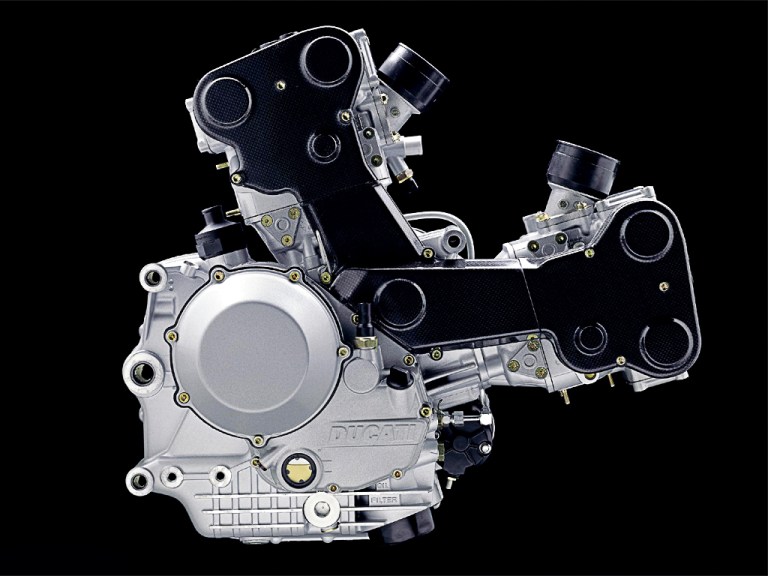
Its debut was with the 748 IE model, in 1986 during Bol d’Or endurance race on Paul Ricard track. Two years later Ducati also started to feel more confident in WSBK events (officially held since 1988), where they took the first ever Championship title. In 1987 Desmoquattro was released to the public roads with a stock 851 model, which as the first ever Italian motorcycle broke the 100 HP barrier.
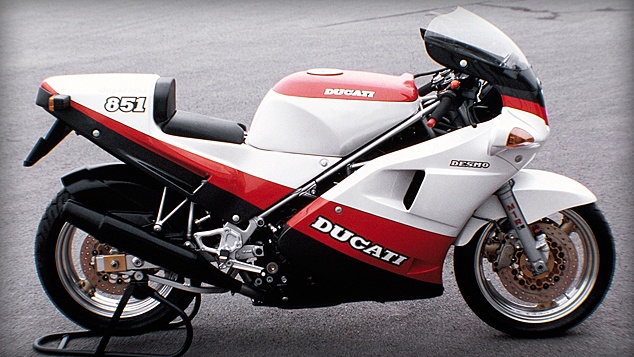
The beginning of the 90’s is Ducati 888 reign. Driven by Doug Polen it takes the titles in 1991 and 1992, loosing to Kawasaki in 1993 (Italian team won significantly more races but was less consistent than Kawasaki, eventually losing by 29 points). Ducati engineering team steps up early in the process. Massimo Tamburini takes the lead of the project – an engineer working previously for Bimota and Cagiva. The team is joined by Sergio Robbiano. Guys take over the development centre of Cagiva and having a quite significant budget on the table; they let the imagination work.
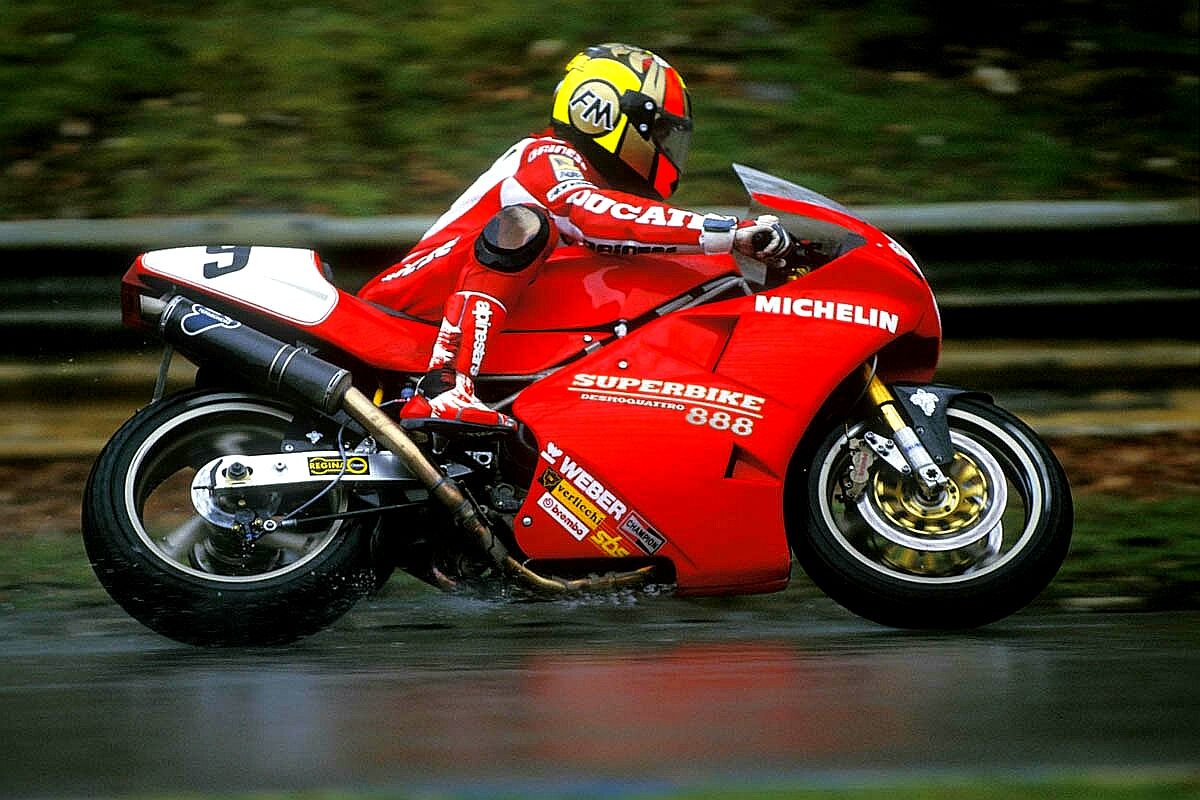
Ducati 916
When FIM was launching the World Superbike Class, one of the critical regulation points stated that to be able to achieve the homologation – You need to release 1000 stock versions of a motorcycle. This rule didn’t apply to Ducati though, for which they reduced the required number to 200. One of the reasons for such decision was that Ducati didn’t have the resources to compete with the Japanese.
This controversial move was not the only regulation favouring the Bolognia based team. The board of FIM decided that motorcycles that could compete were allowed to have either two cylinders of 1000cc displacement or 4 cylinders but limited to 750cc. It was another decision aimed at the Japanese competition, who was putting most of the effort into four-cylinder engines development. These rules were lifted as late as 2003 when most of the manufacturers were threatening to quit the series.
The creative process for 916 was not based on a clean sheet of paper. This new generation of a motorcycle looked revolutionary, mainly due to its design. Tamburini claimed that he didn’t focus on the looks. The priority was to create a top of the line racer… and he succeeded. And if it was indeed only an accident, the goal was achieved with such looks – no harm done here. The whole concept was based on a chrome-moly trellis frame.
The heart was a Desmoquattro inherited from 888
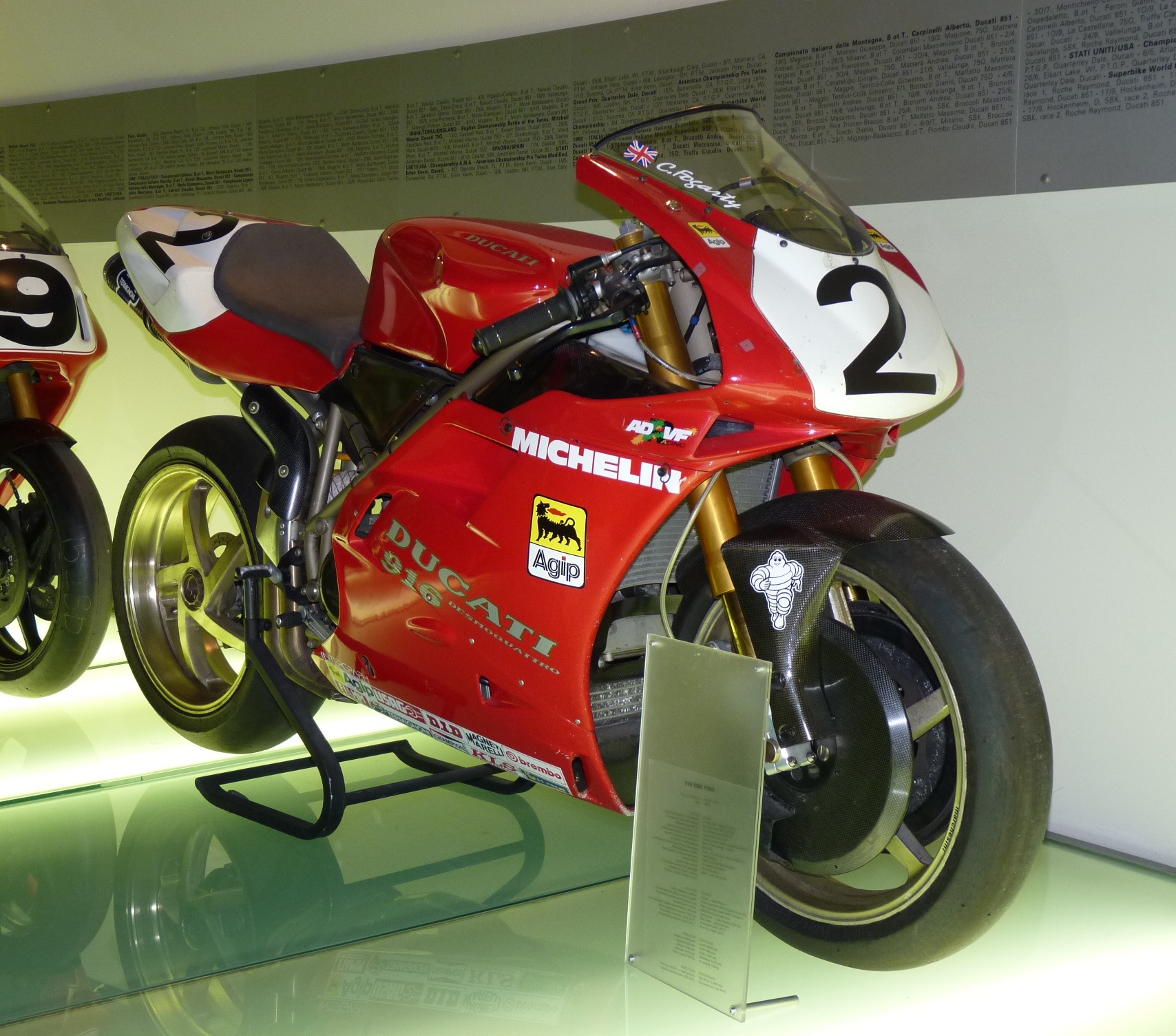
but with increased displacement (to 916 cc). Headers were upgraded, Weber designed a new fuel injection, the radiator was bigger and more efficient and on top of it all – both exhausts were placed under the seat, to keep the lines clean and provide the best aerodynamics. USD front forks were already present on 888 generation, but the rear suspension was not. Tamburini was fascinated with the design of ELF Honda and decided to go with single sided swing arm with a characteristic 3-spoked rim. Doing it precisely on the patent limit to avoid being accused of copying Honda.
First generations were delivering 105 bhp, but it was quickly raised to 114 bhp. 916 was reaching the first 100km/h after 3,1 seconds –
So it was fast.
The official prototype was presented in 1993, and production was planned for 1994. The test riders and press were full of admiration for the performance and the looks. They were critical though accusing 916 of being too radical that it was mainly a racer, stripped of road capabilities.
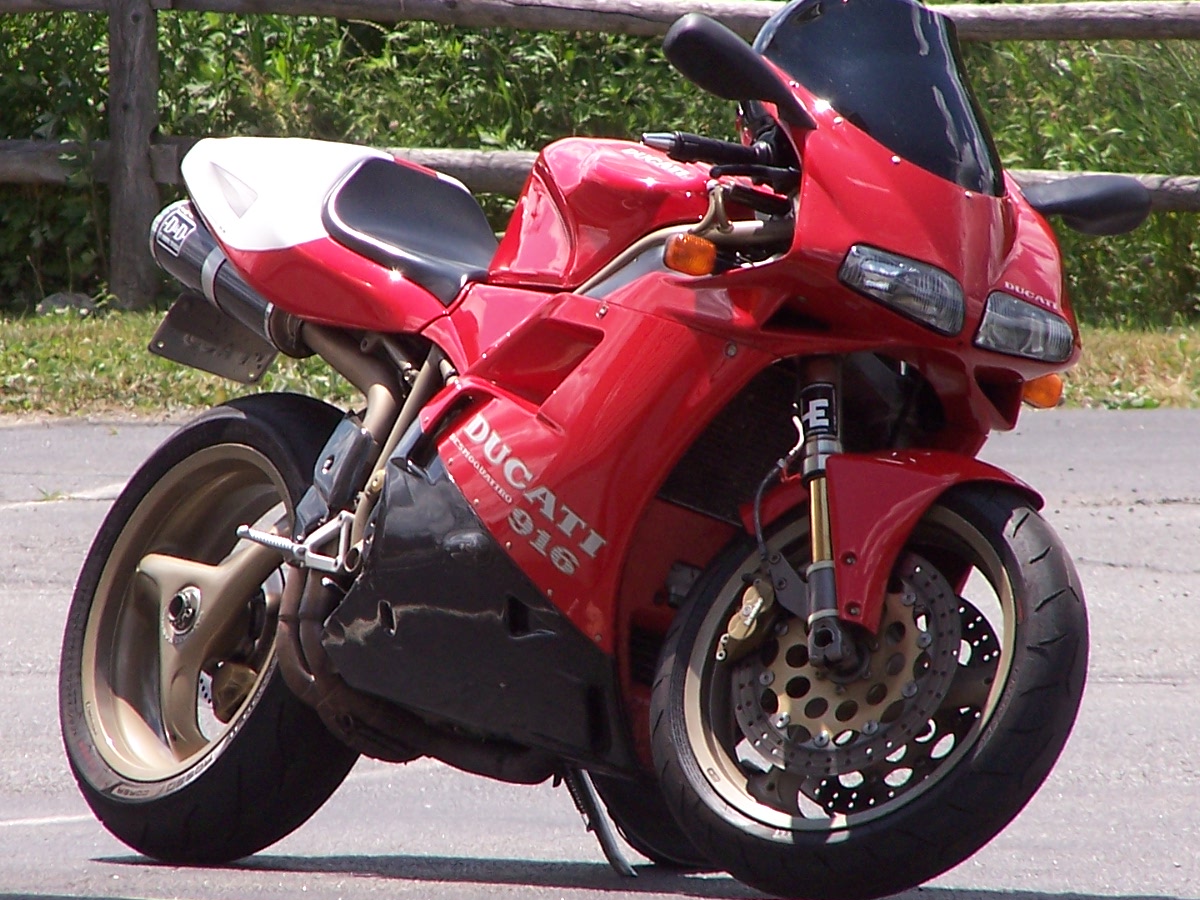
Despite that WSBK was very favorable for Italians, the one point was very clear. Competition bikes were obliged to have the same suspension elements that its road equivalents. And putting crazy expensive components to these bikes would make their price even more out of reach. They decided to do the 200 pieces a year, that would be their limited series of a top model. Keeping the regular version more down to earth (with handling, compromises… and lower price). With time most of the components were moved to the regular version.
A sales trick that has worked well in models released before.
In 1994 SP version was released (regular version was called Strada back then). Production of these 200 pieces was done by hand. Ducati delivered this number of stock machines, to strip them down, swap the suspension, improve the brakes, put on carbon fibre elements and sports exhaust. The engine was also modified in the process. After the list of mods was completed – they were badged as SP versions, while still keeping the road homologation.
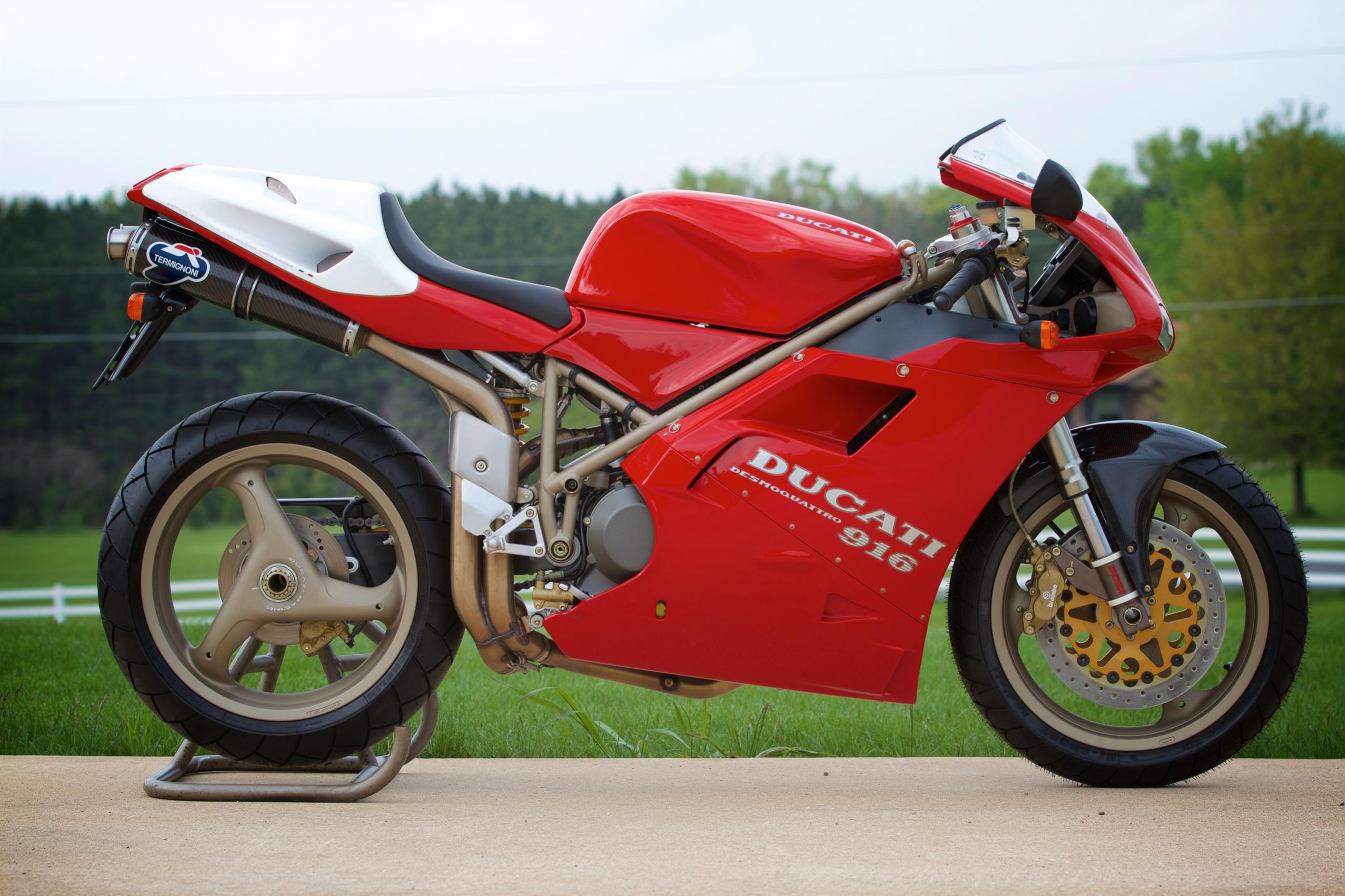
At first glance, the SP from 1994 was not much different than the Strada. The biggest changes were inside the engine. Gearbox was improved, the alternator was made lighter, different oil pump and a series of carbon fiber covers were installed. Compression ratio was raised and valve timing was adjusted. All these mods resulted in raising the horsepower to 126 in the first release and 131 later on. Just the numbers were impressive, but again – made the SP version unrideable on the roads – since until reaching 5000 rpm the numbers were lower than the Strada. SP was performing only after reaching 7000 rpm.
In 1995 SP2 version was introduced (since then SP was called SP1). Ducati decided to save some money and stopped using carbon fibre in few places. Following year, in 1996 SP3 was released… but these are not the machines that are the most interesting. As about that year came the moment when Ducati decided to compete in the USA. Well, the move was not completely a free will, since occasionally unwise decisions and bad management forced Cagiva group to sell Ducati to American investment fund Texas Pacific Group in September 1996. So obviously Ducati presence was needed in the USA. And to do that – they were required to create yet another road legal version.
Ducati 916 SPA (aka 955SP) was created – the rarest of them all.
Only 54 were ever produced. The main difference against the European version was increasing the engine displacement to 955 ccs. The unit generated 122 bhp and 74 Nm of torque. The difference doesn’t seem much, but the torque chart looked significantly better.

The breakthrough came in 1997. It was the first season of the biggest engine. After positive experiences with 955SP version, Ducati decided to do the same thing to the European version. This change was to improve on the biggest issue of 916 – weak mid range. Desmoquattro grew to 996cc. Refreshed L-Twin finally overcame the poor performance problems in the low and midrange, while further improving on the power output at high rpm. It wasn’t only due to a bigger displacement. The designers used new headers and further increased the compression ratio. They also used the new fuel injection system with 2 injectors per cylinder.
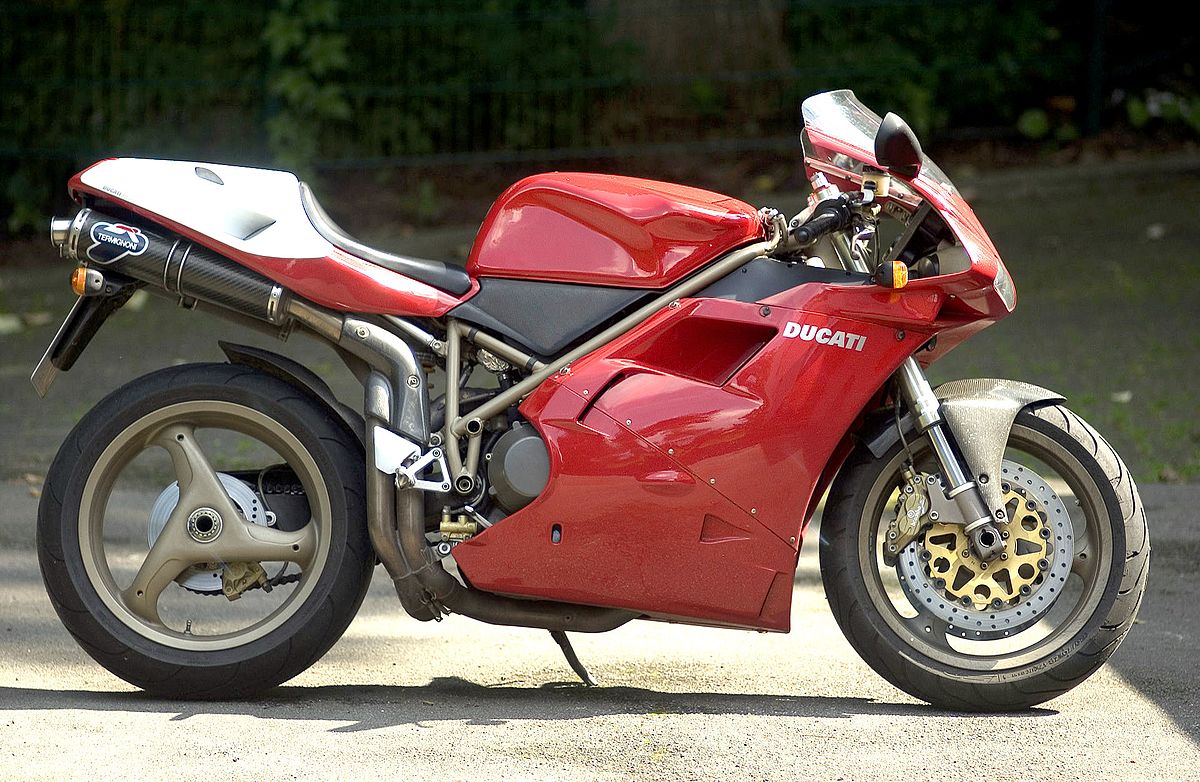
These mods were badged as 916 SPS…
and they came with the problem. The new version didn’t comply with the homologation rules on European markets. But Italians… as always, found a way. They shipped the SPS’s to the states, registered them over there, and imported them back, as second-hand motorcycles to local European customers. This procedure somehow didn’t violate the WSBK regulations!
For season 1998 Ducati designed a new frame, which debuted during Kyalami track race. Again… for homologation reasons, the frame needed to be released for the roads.
916 SPS Fogarty Replica was released
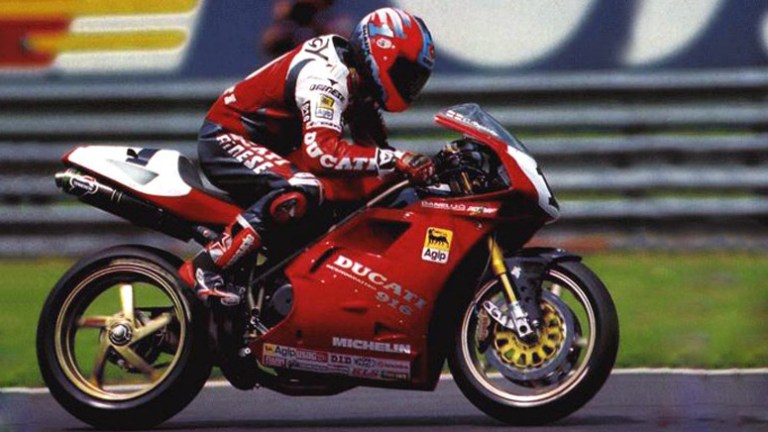
The fans nicknamed the bike as “Foggy”. Besides the frame – this version went with new Marchesini rims and a paint job quite identical to the racing version. 202 pieces were produced. The 2 that were over the required limit were split between Carl and the Ducati Museum.
During the entire duration of the 90’s Ducati dominated the Superbike class with only two exceptions. Japanese finally understood that nothing beats the number of cc’s, even two cylinders more. Honda decided to build an anty-Ducati. A machine that combines Japanese engineering with the Italian magic of a V2. With this combination put into motion – VTR was born, to win the WSBK title in the year 2000.
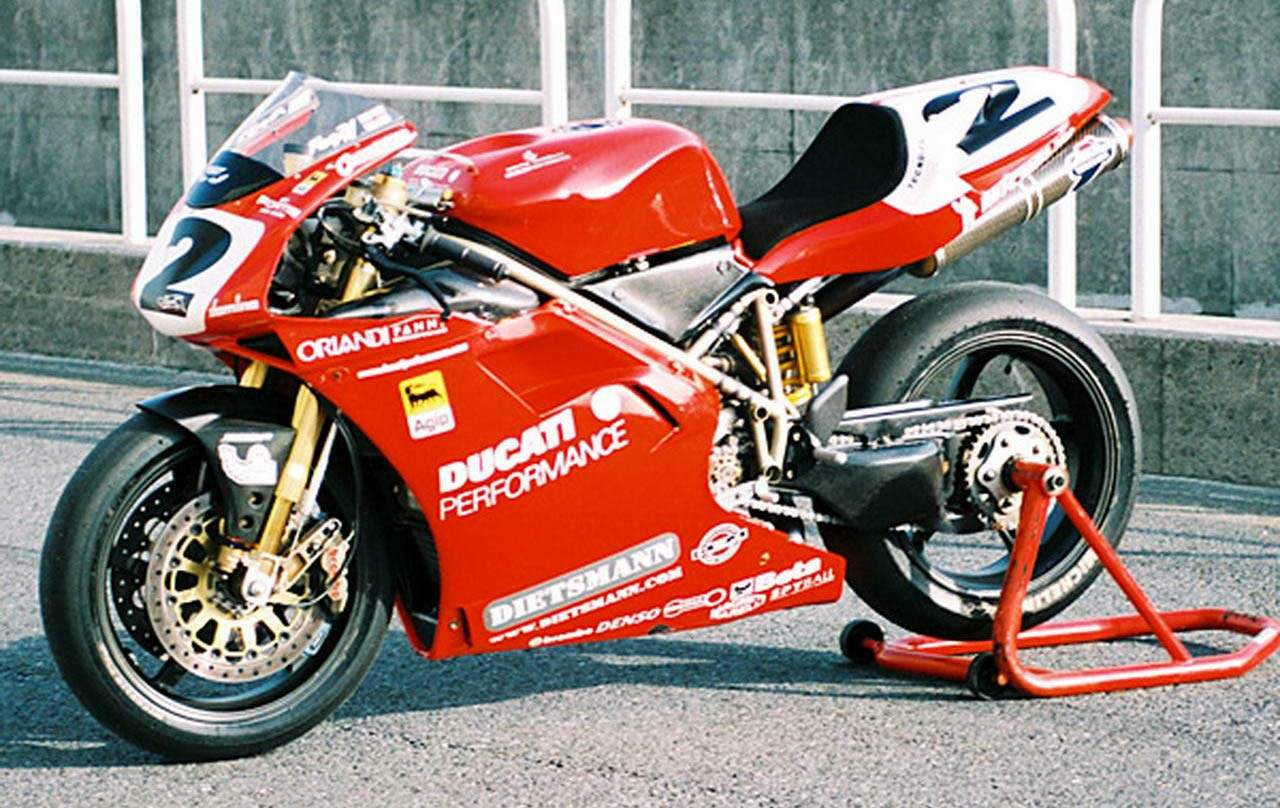
Ducati engineers knew what was coming, and decided to further improve their champion. They changed the alternator, improved the crankshaft and pistons, changed the ECU. The year 1999 began with a change of name to 996 and another release of SPS Fogarty Replica (with 996 number next to it). And again the USA export – import procedure needed to be made. A year later SPS became legal in Europe, but it was its last year of production.
Desmoquattro was substituted with Testaretta engine – a powerplant that was prepared for the successor of the
“most beautiful superbike in history”.
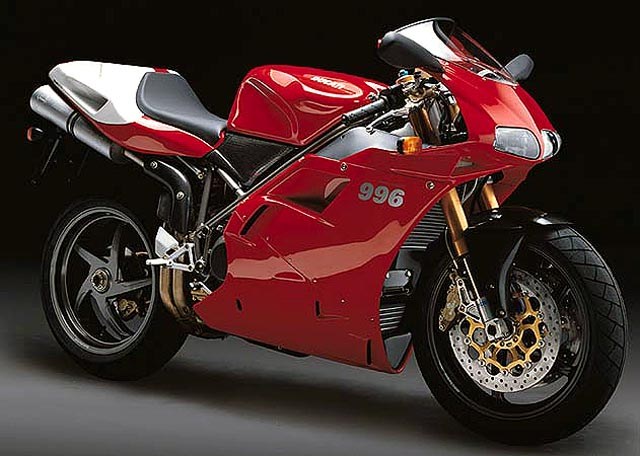
Massimo Taburini is the father of the 916 model. But it wasn’t only for him to create a legend, that grew on this model. The foundation of its success is the powerplant – the Desmoquattro L-Twin engine. If it wasn’t for a young engineer in the 80’s, who went against his boss’s decisions (who by the way was one of the most renowned engineers at that time), who knows how would the history go. Maybe Ducati would never be as successful in racing, and the 916 would never be created. Carl Fogarty was riding the 916 for almost a decade – from one championship title to another. They got along perfectly.
And finally the Castolini Cagiva, who had an ambition and a goal when he took over in the 80’s. Match that with a great team and spot-on decision making… A compilation of events, people, and a legend was born. Today, even a 200 bhp L-Twin Paginale cannot overmatch its predecessor’s position, and I don’t think it will ever match its status.
Based on the original text by Jakub “Jabok” Ulaszek (youngtimerbike24.pl)

